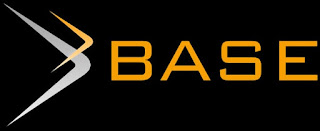The Locals’ Voices To A Langgher Dhatang Developmental Plan As A Religious Tourism Destination in Madura
DOI:
https://doi.org/10.21154/muslimheritage.v8i1.5360Keywords:
Economic advantages, feasible strategies, Langgher Dhatang, Madura, relegious tourism destinationAbstract
Abstract
Langgher Dhatang symbolizes an Islamic architecture. Some belive that religion should not be commercialized. This article, however, rebuts the given point of views. Therefore, this aims to study three major issues: 1) local perceptions towards the development of Langgher Dhatang as a religious tourism destination, 2) the common-held belief in the interplay between the local tourism destination and economic advantages, and 3) feasible actions to take to make Langgher Dhatang more popular. This employed a quantitave research. Conducting door-to-door interviews with structured questions to collect the data was held. Researchers successfully interviewed 13 local people nearest to the location of Langgher Dhatang as they would be likely to have a direct impact from the scheme. The research shows that the involved participants demonstrated various attitudes when Langgher Dhatang is designed to be a local religious tourism destination. The participants’ responses are everage, ranging from 38.5% (agree), 30.8% (disagree and neither). The responses vary dealing with economic consequences that would possibly bring and their gaps is wide: 69.2% believe that the tourism positively impacts economically, and 15.4% claims that this will have no economic advantages, including 15.4% has no idea with the impact of tourism destination development around them. Some feasible strategies were also proposed.
Abstrak
Langgher Dhatang menyimbolkan arsitektur agama Islam. Sebagian orang percaya bahwa agama seharusnya tidak boleh dikomersialkan. Akan tetapi, penelitian bertentangan dengan pandangan tersebut. Oleh karena itu, ada tiga hal penting yang menjadi isu dalam penelitian ini: 1) persepsi masyarakat setempat jika Langgher Dhatang dijadikan tujuan wisata religi, 2) pandangan umum terhadap kaitan antara tujuan wisata religi dan keuntungan secara ekonomi, 3) serta strategi yang bisa dilakukan untuk meningkatkan popularitas Langgher Dhatang sehingga pengunjungnya bisa meningkat. Penelitian ini menggunakan pendekatan penelitian kuantitatif. Peneliti melakukan interview dari pintu ke pintu untuk mendapatkan data. Kami berhasil menginterview 13 orang terdekat dengan lokasi Langgher Dhatang. Hal ini disebabkan karena mereka yang terdekat akan terkena dampak secara langsung dari rencana ini. Hasil penelitian ini menujukkan bahwa responden memiliki pandangan yang berbeda terhadap rencana pengembangan Langgher Dhatang sebagai tujuan wisata religi: 38,5% setuju, 30,8% tidak setuju, dan 30,8% netral. Terkait dengan isu ekonomi, responden juga menunjukkan respon yang berbeda. Menariknya, perbedaan persentasenya cukup luas: 69,2% percaya bahwa pengembangan Langgher Dhatang ke arah destinasi wisata memberikan dampak positif terhadap perekonomian mereka, 15,4% justru sebaliknya tidak percaya dampak positif tersebut, dan 14,4% posisi netral. Beberapa strategi yang bisa dilakukan untuk meningkatkan popularitas Langgher Dhatang juga diusulkan.
References
A Jauhari, F A Mufarroha, Moch Rofi’, Muhammd Fikri Nasrullah, Fitriyah, Khoirun Nisa’, “The Development of Smart Travel Guide Application In Madura Tourism”, Proceedings of the 3rd International Conference on Social Sciences (ICSS 2020), Vol. 473, (2020)
Ada Mirela Tomescu, Dorina Lezeu, Marcel BoloÅŸ, and Delia Pop, “Tourism and Local Development”, Rejuvenating the Tourism Destination, (2006): presented in 18th International Scientific Conference: Tourism and Hospitality Industry, seen at December 02, 2022, retrieved from (PDF) “Tourism and Local Development” (researchgate.net).
Adenike D. Adebayo and Jim Butcher, “Community Empowerment in Nigeria’s Tourism Industry: An Analysis of Stakeholders’ Perceptions”, Tourism Planning & Development, (2022), 1-21, https://doi.org/10.1080/21568316.2022.2127865.
Afamefuna Eyisi, Diane Lee, & Kathryn Trees, “Local Perceptions of Tourism Development and Socio-Cultural Impacts in Negeria”, Tourism Planning & Development, (2021). https://doi.org/10.1080/21568316.2021.1939134.
Anna Maria Stalmirska, “Loca Food in Tourism Destination Development: The Supply-side Perspectives”, Tourism Planning & Development, (2021), https://doi.org/10.1080/21568316.2021.1928739.
AIST, “10 REASONS WHY TRAVEL AGENCIES NEED A WEBSITE”, (2022), seen at December 01, (2022), retrieved from 10 Reasons Why Travel Agencies Need A Website (aist.global).
Bibi Suprianto, “Tradisi Hukum Adat Pati Nyawa Lintas Etnis Melayu Islam dan Dayak Kabupaten Kapuas Hulu”, Muslim Heritage, 6(2): 2021,
: 10.21154/muslimheritage.v6i2.3195.
Dalia PerkumienÄ— and Rasa PranskῦnienÄ—, “OVERTOURISM: BETWEEN THE RIGHT TO TRAVEL AND RESIDENTS’ RIGHT”, Sustainability, 11, No. 12 (2019). https://doi.org/10.3390/su11072138.
Dimitrios Stylidisa and Ana Maria Dominguez Quintero, “Understanding the Effect of Place Image and Knowledge of Tourism on Residents’ Attitudes towards Tourism and Their Word-of-Mouth Intentions: Evidence From Seville, Spain”, Tourism Planning & Development, 19, No. 5, (2022): 433-450, https://doi.org/10.1080/21568316.2022.2049859.
Dinas Kepemudaan Olah Raga dan Pariwisata Kabupaten Pamekasan, “Pembahasan Rencana Induk Pariwisata Kabupaten Pamekasan Tahun 2022 Sukses Terlaksana,” (2022), retrieved from Pembahasan Rencana Induk Pariwisata Kabupaten Pamekasan Tahun 2022 Sukses Terlaksana - Disporapar Pamekasan (pamekasankab.go.id).
Hanik Fitriani, “Proyeksi Potensi Pengembangan Pariwisata Perhotelan dengan Konsep Syariah”, Muslim Heritage, 3(1): (2018), : 10.21154/muslimheritage.v3i1.1257.
Hanik Mariana, “Korelasi Zakat dengan Prilaku Konsumen dan Pemberdayaan Ekonomi Masyarakat di Banyudono, Ponorogo”, Muslim Heritage, 1(1): 2016, : 10.21154/muslimheritage.v1i1.382.
Haroon Rasool, Shafat Maqbool, and Md. Tarique, “The Relationship between Tourism and Economic Growth among BRICS Countries: a Panel Cointegration Analysis”, Future Business Journal, 7(1): (2021), https://doi.org/10.1186/s43093-020-00048-3.
Hassan Salehi & Morteza Farahbakhsh, “ Tourism Advertisment Management and Effective Tools in Tourism Industry”, International Journal of Geography and Geology, 3, No. 10 (2014): 124-134.
Kibrachew Tamene & Amare Wondirat, “Economic Impacts of Tourism on Small-Scale Tourism Enterprises (SSTEs) in Hawassa City, Southern Ethiopia”, International Journal of Tourism Sciences, 19, N0. 1 (2019), https://doi.org/10.1080/15980634.2019.1592951.
Lisa Ruhanen, “Strategic Planning for Local Tourism Destination: An Analysis of Tourism Plans”. Tourism and Hospitality Planning & Development, 2004. DOI:10.1080/1479053042000314502.
Mangold, W.; Faulds, D. SOCIAL MEDIA: THE NEW HYBRID ELEMENT OF THE PROMOTION MIX. BUS. Horz. 52. (2009): 357”“365.
MarÃa-del-Mar Alonso-Almeida, Fernando Borrajo-Millán and Liu Yi, “ARE SOCIAL MEDIA DATA PUSHING OVERTOURISM? THE CASE OF BARCELONA AND CHINESE TOURISTS”, Sustainability, 11, No. 12. (2019): 1-17, https://doi.org/10.3390/su11123356.
Maria Lichrou and Lisa O’malley, “Mining and Tourism: Conflicts in the Marketing of Milos Island as a Tourism Destination”, Tourism and Hospitality Planning & Development, 3, No. 1 (2007), https://doi.org/10.1080/14790530600640834.
M. Kharis Majid, Winda Roini, Azmi Putri Ayu Wardani, and Maulida Hasyyah Sabrina, “THE URGENCY OF SPRITUAL HEALING DURING THE CORONAVIRUS OUTBREAK,” Teosofia: Indonesian Journal of Islamic Msyticism 11, No. 1 (2022): 23-42, DOI: 10.21580/tos.v11i1.9569.
Mohammad Arief, Rita Indah Mustikowati, Fathor A.S. and Muh. Syarif, “Tourist Destination based on SMEs Innovation: a Lesson from Madura Island, Indonesia”, WSEAS Transactions on Business and Economic, 19 (2022), DOI: 10.37394/23207.2022.19.88.
Muhammad dan Sri Rahayu Budiani, “RURAL CREATIVE TOURISM AS A GROWTH TRIANGLE ON THE SLOPES OF MOUNT SUMBING, MAGELANG IN THE NEW ERA OF NORMALITY”, E-Journal of Tourism 9, No. 1 (2022): 47-57. DOI: https://doi.org/10.24922/eot.v9i1.84035.
Nurul Qomariah and Ahmad Saifuddin, “Tará¿‘qa FOLLOWERS AND INNTER PEACE: A PHENOMENOLOGICAL STUDY OF NAQSHBANDIYYA-KHá¾¹LIDIYYA ORDER IN INDONESIA,” Teosofia: Indonesian Journal of Islamic Mysticism, 11, No.1 (2022): 1-22.
Rina Widiastuti, Wisma Nugraha Christianto Richardus, & Budiawan, “GLORIFYING CULTURAL SCAPES TO CONFLICTUAL TOURISMSCAPES: THE DYNAMIC OF TOURISM DEVELOPMENT IN RURAL INDONESIA,” E-Journal of Tourism, 9. No. 1 (2022): 97-112, DOI: https://doi.org/10.24922/eot.v9i1.83518.
Robert B. Richardson, “THE CONTRIBUTION OF TOURISM TO ECONOMIC GROWTH AND FOOD SECURITY”, ResearchGate, (2014). Seen at December 01, 2022, retrieved from (PDF) The Contribution of Tourism to Economic Growth and Food Security (researchgate.net).
Soyeun Kim & Tazim Jamal, “The Co-Evolution of Rural Tourism and Sustainable Rural Development in Hongdong, Korea: Complexity, Conflict and Local Response”, Journal of Sustainable Tourism, 8, No. 9, (2015). https://doi.org/10.1080/09669582.2015.1022181.
Suemedha Sood, “10 SITES OF RELIGIOUS PILGRIMAGE”, is accessed in December 01, 2022. This can be retrieved from 10 sites of religious pilgrimage - BBC Travel.
Suhair Anwar Khan, “RELIGIOUS TOURISM ”“ DEFINITONS AND DESTINATIONS”, January 19, 2018. The detail of this information can be reached at Religious Tourism - Definitions and Destinations (linkedin.com).
Tambiah, S., J, “THE COSMOLOGICAL AND PERFORMATIVE SIGNIFICANCE OF A THAI CULT OF HEALING THROUGH MEDITATION”, Culture, Medicine and Psychiatry, 1 (1977): 97-132.
The head of Youth Sport and Culture office, “Disporabud Pamekasan Kaji Potensi Wisata Desa”, (2023), retrieved from Disporabud Pamekasan Kaji Potensi Wisata Desa - ANTARA News Jawa Timur.
Titov Chuk’s Mayvani, Rifai Afin, Alifah Rokhmah Idialis, and Sariyani, “Analysis of Growth and Tourism Clusters in Madura”, Jurnal Ekonomi dan Studi Pembangunan, 14(1), (2022), Permalink/DOI: http://dx.doi.org/10.17977/um002v14i12022p059.
Touropia, “25 TOP TOURIST ATTRACTIONS IN EUROPE”, 2020, seen at December 01, (2022), retrieved from 25 Top Tourist Attractions in Europe - Travel Video - YouTube.
Vision of Humanity, “ECONOMIC PROSPERITY, PEACE AND BUSINESS DATA IN 5 CHARTS”, it can be retrieved from Economic Prosperity and Peace are Interlinked [5 Charts] (visionofhumanity.org) 2022
Downloads
Published
Issue
Section
License
Requirements to be met by the author as follows:
- Author storing copyright and grant the journal right of first publication manuscripts simultaneously with licensed under the Creative Commons Attribution License that allows others to share the work with a statement of the work's authorship and initial publication in this journal.
- Authors can enter into the preparation of additional contractual separately for non-exclusive distribution of a rich version of the journal issue (eg:post it to an institutional repository or publish it in a book), with the recognition of initial publication in this journal.
- Authors are allowed and encouraged to post their work online (eg, in institutional repositories or on their website) prior to and during the submission process, because it can lead to productive exchanges, as well as citations earlier and more severe than published works. (see The Effect of Open Access).
















